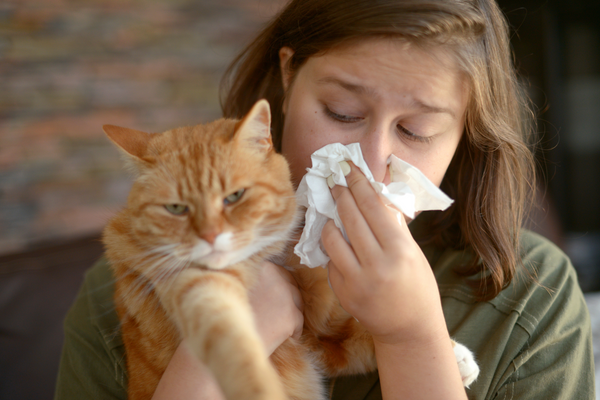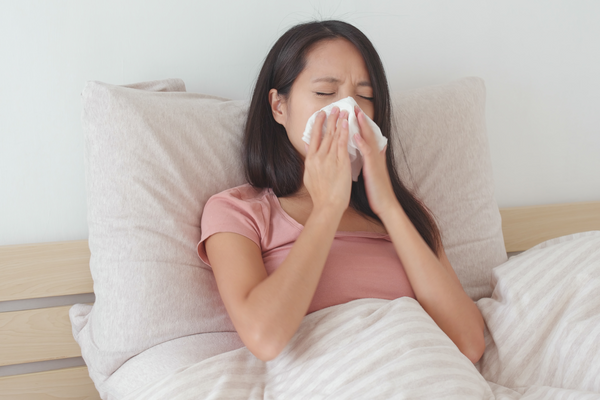Eco-Friendly Laundry Tips to Help Protect Our Planet

If you’re looking to make eco-conscious changes at home, your laundry routine is a great place to start. It may seem like a pedestrian chore, but laundry has a much more significant impact on our planet than most people realize. In fact, about 80% of our clothing’s life cycle impact on the natural environment comes from washing and drying because it takes so much energy to heat the washer water and run the dry cycle. Luckily, there are several easy, eco-friendly laundry swaps you can start incorporating right now to reduce your personal water and energy use, and therefore your carbon footprint while still ensuring your clothes are as clean and soft as ever.
Wear It More Than Once
One of the simplest ways to cut back on your laundry’s impact is to – wait for it – do less of it! Of course, this tip doesn’t go for anything – socks, unmentionables, and workout clothes come to mind. But, wearing most of your clothing more than once before tossing them into the laundry hamper is an excellent first step to making your laundry habits more environmentally friendly. For example, the United Nations Environment Programme (UNEP) found that you can consume up to five times less energy by wearing your jeans at least three times, washing them in cold water, and skipping the dryer or the iron. Even Levi’s is on the “wash less” bandwagon. They recommend washing jeans every two weeks rather than every day or every week.
Use Earth-Friendly Laundry Detergent
A good laundry detergent is the key to fresh, soft, clean clothes. Still, many conventional laundry products contain ingredients that aren’t good for you, your clothes, or our aquatic ecosystems where the dirty water we wash down the drain can end up. So next time you stock up on laundry detergent, consider switching to a more planet-friendly product, like our Anti-Allergen Laundry Detergent. It’s 100% biodegradable and designed to work well in cold water, plus it leaves your clothes fresh, clean, and odor-free, but you can feel good knowing that there aren’t any unnecessary ingredients in the formula.
Wash in Cold Water
Water heating alone often accounts for up to a whopping 90% of the energy needed to run a wash cycle, so one of the easiest ways to be more eco-conscious in the laundry room is to opt for cold water cycles. Not only will you save quite a bit of energy, but your electricity bill will likely be lower, and your clothing will last a bit longer as well. It’s important to note that not all laundry detergents work effectively in cold water. Unlike commercial detergents, our Anti-Allergen Laundry Detergent is designed to work well in cold water.
Use a Front-Load Washing Machine
According to Energy Star, the average American household does over 300 loads of laundry each year, consuming about 13,500 gallons of water. If you have a top-loading washing machine from the last century, chances are it uses at least twice as much water per load than a newer machine. Front-loading washing machines bearing the Energy Star logo typically use between 18 and 25 gallons per load, compared to 40+ gallons for older devices. Switching to a front-loading washing machine can save as much as 7,000 gallons of water per year. Most washers have an average lifespan of about 11 years – so that’s enough water saved to fill up three backyard swimming pools or provide a lifetime of drinking water for six people!
Not to mention, front-load washers without an agitator are much gentler on clothing. But whether or not you're ready to replace your current hardware, there are things you can do to upgrade efficiency, such as washing in cold water and our next tip: only washing full loads of laundry.
Only Wash Full Loads
No matter if you’re using a full-size traditional washing machine or a modern front-loading washing machine, it’s still a lot of water to use if you're only washing a few items of clothing. Of course, there will always be times when you need to have specific garments clean before you have a full load. But as a general rule of thumb, aim only to run the washer when it’s full. So, yes, we’re essentially telling you to do less laundry. You’re welcome!
Wash Clothes By Hand
When you only need to wash one or two items, consider washing them by hand. We know what you're thinking, this isn’t 1821 – hand-washing laundry is way too time-consuming! But hear us out: there are some great tools that make hand-washing laundry a breeze. For instance, laundry plungers and clothes washing wands are cheap and efficient, and simple washbasins are great for hand-washing delicates. While it’s not practical for every kind of washable, hand washing can really give you a sense of how much laundry you're going through weekly. So why not give it a try? You might be surprised at your weekly load.
Avoid Using Bleach
Chlorine bleach, otherwise known as sodium hypochlorite, is highly caustic and may cause skin irritation and redness. Its fumes can irritate eyes and airways, and it can be fatal if swallowed. Bleach also poses a hazard because it can react with other cleaners to form toxic gases. For instance, if mixed with cleaners containing ammonia, bleached-based cleaning and laundry products form lung-damaging chloramine gases. In addition, when released to waterways, chlorine bleach can create harmful byproducts that can contaminate drinking water and harm marine life. Once introduced into the environment, these byproducts can take years or even decades to break down to less damaging forms.
There is a better way to remove stubborn odors, unsightly stains, and germs from your laundry. Our all-purpose cleaner, EPA-registered disinfectant, and soft surface sanitizer, Vital Oxide, can replace bleach in your laundry room (and every other room in your home, for that matter). Vital Oxide’s active ingredient, stabilized chlorine dioxide (ClO2), harnesses the power of oxygen to create a powerhouse cleaner (perfect for stubborn stains), germ killer, mold remover, and odor eliminator. While it has “chlorine” in its name, chlorine dioxide is levels above household bleach. In addition, unlike bleach, which has an offensive odor and forms trihalomethanes when mixed with water (making it highly corrosive), chlorine dioxide breaks down into simple salt. As a result, it produces no harmful byproducts, making it an Earth-friendly choice. Use Vital Oxide to pre-treat stains, or add ½ cup to 1 cup of Vital Oxide directly to the washer along with your regular detergent.
Related: It’s Time to Bid Bleach Farewell, For Good. Here’s Why
Hang Clothes to Dry
There are upward of 89 million clothes dryers in the U.S., each emitting more than a ton of carbon dioxide per year. Because of the simple fact that dryers use so much energy, skipping the dryer all together can make a real difference. These hot summer days are perfect for air-drying clothes and linens instead of running your dryer. Retractable clotheslines are surprisingly affordable, and you can set them up between trees, on your patio, or even on a small apartment balcony. Don’t have enough outdoor space? A simple foldable drying rack can be used to dry clothing indoors – and it’s a must-have for delicate garments. Whether you hang your laundry outside to dry in the fresh breeze or set up your indoor drying rack, this drying method is much more sustainable and can also leave your clothes smelling incredibly fresh. Plus, as an added bonus, your threads last longer when you line dry because there's less wear-and-tear than when you use the dryer.
Maximize Your Dryer
Line-drying isn’t always a practical choice. If you’re sticking with your dryer some (or all) of the time, cleaning the lint filter frequently will increase efficiency and shorten drying time. You can also significantly cut down your dryer’s runtime with the help of a few reusable dryer balls. They’re super budget-friendly (usually around $6 each) and help absorb moisture from your clothes, soften clothes, and reduce wrinkles. Another energy-saving setting that many modern dryers have is a moisture sensor. It will automatically reduce the amount of drying time or shut off the machine when it senses that clothes are dry, which reduces wear-and-tear on your garments, saves lots of energy, and lowers your electric bill. If you’re planning to shop for a new dryer soon, a suitable moisture sensor is one of the best things to look for!
Ditch Your Iron
It’s no secret that ironing is a tedious chore. But it also consumes energy and deteriorates fabrics. So, you probably won’t be too disappointed to ditch your iron! Still, no self-respecting conservationist wants to look wrinkled, right? To avoid looking ruffled, simply hang up clothes immediately after the wash cycle is complete or toss a few dryer balls into the dryer. For wrinkle-prone clothing like linen, stop the wash cycle before the final spin cycle to leave a little extra water in garments before hanging up to dry. After your linen items are dry, fold them where you want creases to be, and place them under other clothes in your dresser, which will further help press them and prevent wrinkles.
Final Thoughts

Making your laundry routine more eco-friendly has so many benefits. It's better for your wardrobe, your wallet, and your planet. Everybody wins when you have a more sustainable laundry routine. Washing your clothes in cold water, line drying clothes, and using a biodegradable detergent will not only leave your clothes feeling clean and fresh but will also help protect our amazing planet.
Have questions about planet-friendly cleaning or reducing harsh chemicals in your home? We have answers! The Ecology Works has been leading the way in green cleaning since 1993. We can help you select the products you need to live a better, allergen-free life. Please feel free to Contact Us or message us on Facebook. No question is too small! We're here to help.






